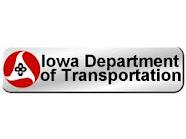Iowa DOT begins traffic information collection in southwest Iowa
April 27th, 2012 by Ric Hanson
Officials with the Iowa Department of Transportation said Friday they’ll be working across the state this summer to determine how many cars, trucks and other vehicles are using the state’s roadways. This year’s efforts are concentrated in southwestern Iowa, but occasionally crews will work elsewhere in the state.
This year’s efforts are concentrated in southwestern Iowa, but occasionally crews will work elsewhere in the state.
Many employees will spend peak hours between 7 a.m. and 6 p.m. at one location counting the morning, noon and evening traffic. They will count and classify vehicles, record vehicle turning movements, tally helmet usage by motorcyclists, and gather other data necessary to plan the future of Iowa’s roadway systems. During off-peak hours when they are not counting vehicles, those same employees may be seen around the community.
The DOT says other employees will be placing and checking portable traffic recorders in the same general areas. When the recorders are set, they usually record data for one or two days and are checked periodically. Employees responsible for the recorders work various shifts, so their vehicles may be seen at local motels while most of us are going about our regular daytime activities.
Another data collection method involves capturing images of the state highways. The program covers half of the state yearly and utilizes a van with two mounted cameras that collect 200 images per mile. At the same time, precise location information is collected through a global positioning system. That data is stored along with the images on the van’s onboard computer system. The van may be seen operating on the state’s highways in the southern half of Iowa as well as all the interstates this year. Other statewide work scheduled for this summer includes the installation, upgrading and maintenance of permanent, automatic traffic recorders and weigh-in-motion equipment.
Officials say all of the work is critical to the future of the state’s transportation system. The information gathered allows transportation officials to better predict traffic trends, and allows them to plan improvements that they say will give Iowans the most benefit for each dollar spent.





